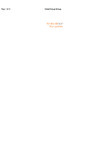Impacts of Artificial Light at Night (ALAN) in marine ecosystems – a review
| dc.contributor.author | Marangoni, L | |
| dc.contributor.author | Davies, Thomas | |
| dc.contributor.author | Smyth, T | |
| dc.contributor.author | Airam, R | |
| dc.contributor.author | Hamann, M | |
| dc.contributor.author | Duarte, C | |
| dc.contributor.author | Pendoley, K | |
| dc.contributor.author | Berge, J | |
| dc.contributor.author | Maggi, E | |
| dc.contributor.author | Levy, O | |
| dc.date.accessioned | 2022-04-28T09:39:35Z | |
| dc.date.issued | 2022-05-18 | |
| dc.identifier.issn | 1354-1013 | |
| dc.identifier.issn | 1365-2486 | |
| dc.identifier.uri | http://hdl.handle.net/10026.1/19086 | |
| dc.description.abstract |
<jats:title>Abstract</jats:title><jats:p>The globally widespread adoption of Artificial Light at Night (ALAN) began in the mid‐20th century. Yet, it is only in the last decade that a renewed research focus has emerged into its impacts on ecological and biological processes in the marine environment that are guided by natural intensities, moon phase, natural light and dark cycles and daily light spectra alterations. The field has diversified rapidly from one restricted to impacts on a handful of vertebrates, to one in which impacts have been quantified across a broad array of marine and coastal habitats and species. Here, we review the current understanding of ALAN impacts in diverse marine ecosystems. The review presents the current state of knowledge across key marine and coastal ecosystems (sandy and rocky shores, coral reefs and pelagic) and taxa (birds and sea turtles), introducing how ALAN can mask seabird and sea turtle navigation, cause changes in animals predation patterns and failure of coral spawning synchronization, as well as inhibition of zooplankton Diel Vertical Migration. Mitigation measures are recommended, however, while strategies for mitigation were easily identified, barriers to implementation are poorly understood. Finally, we point out knowledge gaps that if addressed would aid in the prediction and mitigation of ALAN impacts in the marine realm.</jats:p> | |
| dc.format.extent | 5346-5367 | |
| dc.format.medium | Print-Electronic | |
| dc.language | en | |
| dc.language.iso | en | |
| dc.publisher | Wiley | |
| dc.subject | artificial light at night (ALAN) | |
| dc.subject | conservation guidelines | |
| dc.subject | coral reefs | |
| dc.subject | marine ecosystem | |
| dc.subject | pelagic organisms | |
| dc.subject | rocky intertidal shores | |
| dc.subject | sandy beach | |
| dc.subject | seabirds | |
| dc.subject | sea-turtles | |
| dc.title | Impacts of Artificial Light at Night (ALAN) in marine ecosystems – a review | |
| dc.type | journal-article | |
| dc.type | Journal Article | |
| dc.type | Review | |
| plymouth.author-url | https://www.webofscience.com/api/gateway?GWVersion=2&SrcApp=PARTNER_APP&SrcAuth=LinksAMR&KeyUT=WOS:000810575900001&DestLinkType=FullRecord&DestApp=ALL_WOS&UsrCustomerID=11bb513d99f797142bcfeffcc58ea008 | |
| plymouth.issue | 18 | |
| plymouth.volume | 28 | |
| plymouth.publication-status | Published | |
| plymouth.journal | Global Change Biology | |
| dc.identifier.doi | 10.1111/gcb.16264 | |
| plymouth.organisational-group | /Plymouth | |
| plymouth.organisational-group | /Plymouth/Faculty of Science and Engineering | |
| plymouth.organisational-group | /Plymouth/Faculty of Science and Engineering/School of Biological and Marine Sciences | |
| plymouth.organisational-group | /Plymouth/REF 2021 Researchers by UoA | |
| plymouth.organisational-group | /Plymouth/REF 2021 Researchers by UoA/UoA07 Earth Systems and Environmental Sciences | |
| plymouth.organisational-group | /Plymouth/Users by role | |
| plymouth.organisational-group | /Plymouth/Users by role/Academics | |
| plymouth.organisational-group | /Plymouth/Users by role/Researchers in ResearchFish submission | |
| dc.publisher.place | England | |
| dcterms.dateAccepted | 2022-04-26 | |
| dc.rights.embargodate | 2022-5-28 | |
| dc.identifier.eissn | 1365-2486 | |
| dc.rights.embargoperiod | Not known | |
| rioxxterms.versionofrecord | 10.1111/gcb.16264 | |
| rioxxterms.licenseref.uri | http://www.rioxx.net/licenses/all-rights-reserved | |
| rioxxterms.type | Journal Article/Review | |
| plymouth.funder | Artificial Light Impacts on Coastal Ecosystems (ALICE)::Natural Environment Research Council [2006-2012] |


